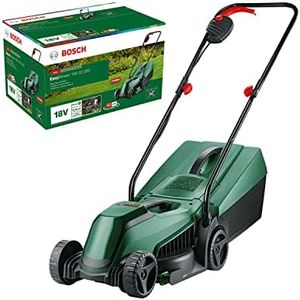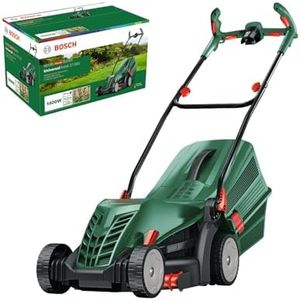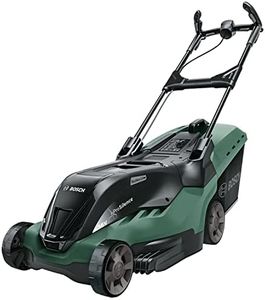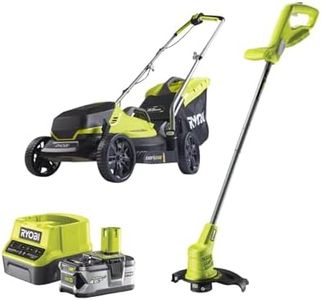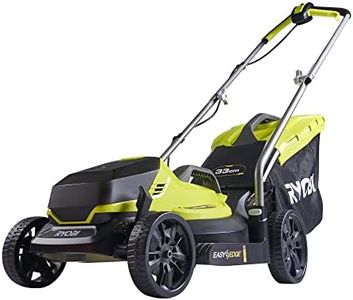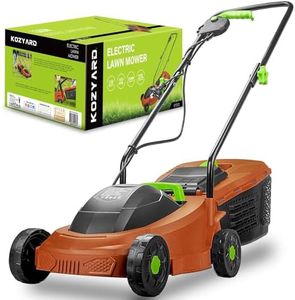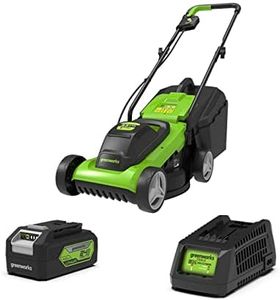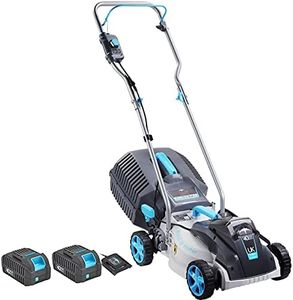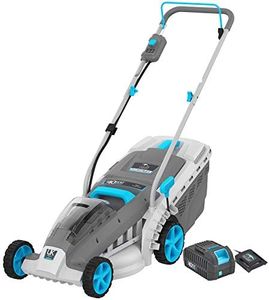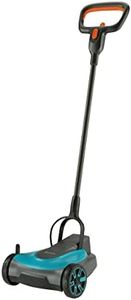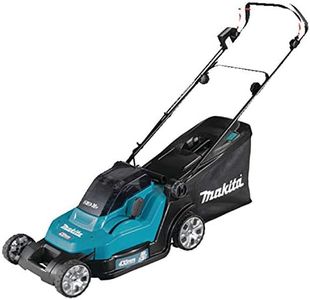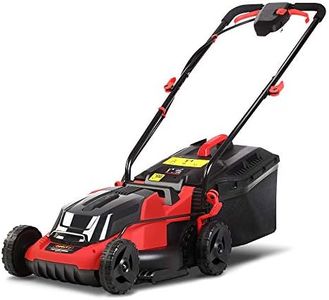We Use CookiesWe use cookies to enhance the security, performance,
functionality and for analytical and promotional activities. By continuing to browse this site you
are agreeing to our privacy policy
10 Best Electric Lawnmower
From leading brands and best sellers available on the web.Buying Guide for the Best Electric Lawnmower
Choosing the right electric lawnmower is all about matching the mower's features to the size and type of your lawn, as well as your personal preferences for maintenance and convenience. Start by considering how big your yard is, how often you want to mow, and whether you care more about ease of use or cutting power. Your goal is to find a mower that makes lawn care as efficient and enjoyable as possible for your unique situation.Power Source (Corded vs. Cordless)Electric lawnmowers come as corded (plugged in) and cordless (battery-powered) types. Corded models are lighter and don't need recharging, but limit how far you can mow, depending on the extension cord. Cordless models offer more freedom to move and are easier to use in larger or more complicated lawns, but they need to be recharged and may be heavier. If you have a small, easy-to-reach yard, corded might work well; for larger or more obstacle-filled spaces, cordless can be more convenient.
Cutting WidthThe cutting width tells you how wide a strip of grass the mower cuts with each pass. Wider decks let you finish mowing faster, which is helpful for big lawns, but can be harder to maneuver in tight spots. Narrower decks are great for small yards or lawns with lots of landscaping, as they fit into tighter spaces more easily. Choose a width that matches how big and detailed your lawn is.
Battery Runtime (for Cordless Mowers)Battery runtime is how long the mower can operate before needing a recharge. Longer runtimes are important for bigger lawns so you can finish mowing in one session. If you have a small yard, shorter runtimes are often enough. Make sure the runtime matches the time it usually takes you to mow your lawn so you don't have to stop partway through.
Cutting Height AdjustmentThis feature lets you change how short or long the grass is cut. Most mowers offer several different height settings, which is good because grass types and preferences vary. If you like to change your grass height with the season or have different types of grass, look for a mower that's easy to adjust and has enough range to suit your needs.
Grass Clipping ManagementMowers deal with clippings by bagging, mulching, or side-discharging them. Bagging collects clippings for a neat look or compost, mulching chops them finely and returns nutrients to the lawn, and side discharge simply ejects clippings. Think about whether you prefer a tidy yard, want to improve your soil, or just want to mow quickly when deciding which option is best for you.
Weight and ManeuverabilityHow heavy and easy to push the mower is can make a big difference, especially if you have hills, rough terrain, or lots of obstacles. Lighter mowers are easier to handle and great for smaller or more complicated lawns, while heavier ones may offer more stability and better cutting in tough areas. If you need to carry the mower or lift it, weight becomes even more important.
Noise LevelElectric mowers are quieter than gas ones, but some are even more silent than others. If you live in a neighborhood with noise restrictions, mow early or late, or just want a peaceful experience, consider a mower with lower noise ratings.

